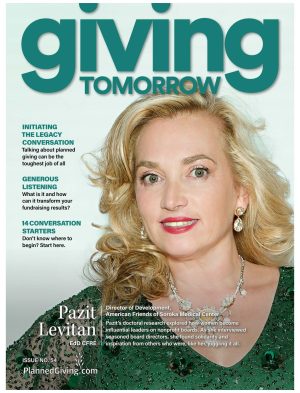I was recently approached by a nonprofit and asked to meet with a board member and his advisors. The board member had told the nonprofit that when he retired the year before, he’d set up a trust that would benefit the nonprofit in the future with a $1 million gift. The nonprofit wanted to include the gift in their current campaign but needed the board member to sign a statement of intent to satisfy the finance office.
I joined the board member and his advisors on a conference call, during which the board member asked: “What exactly did I do when I retired? Set up some kind of trust?”
As the advisors began to describe what the board member had done, it was clear to me he had set up a Donor Advised Fund (DAF). Unfortunately, they were not calling it that, as their firm had come up with a different name for the product as part of their marketing effort. When the donor remained confused, I volunteered that it sounded like what they were describing was a DAF. The advisors agreed and the discussion moved forward.
The advisors were against the idea of using the DAF to pay on the commitment the nonprofit was asking for, since it was set up with an assumed ten-year life and the commitment was payable over five years. Ultimately the nonprofit crafted a non-binding statement of intent with the provision that the donor would make a $1 million gift and a portion of it may or may not come from a donor-advised fund over a ten-year period. Since the statement of intent was non-binding, this did not run afoul of the personal benefit rules or any DAF restrictions, and the nonprofit could record the gift in their campaign.
Lessons learned
If the nonprofit had adopted the guidelines set out by the Partnership for Philanthropic Planning, they would have had a clear-cut way to classify this gift and the development office could have counted the gift without having to go back to the donor.
Donors often do not know the exact structure or details of their own planning, charitable or otherwise. They depend on their advisors. This is one reason it is so important to partner with advisors when working with donors.
When goals don’t align
In this case, even though the donor wanted to make the gift on the timeframe suggested by the nonprofit, his advisors convinced him to keep with the original 10-year plan. A cynic might conclude that the advisors were looking out for their own interests, as the final plan will keep the assets under management for 10 years, rather than 5 years, thereby accruing fees for the advisors. While this may be the consequence of the final resolution, the advisors were keeping their client on track with the plan he had put in place the prior year. The donor had placed the assets in the DAF so they could grow, providing him with more giving power down the road. In this case it was actually the nonprofit using its campaign as a means to push the donor to complete the gift sooner than he had intended.





